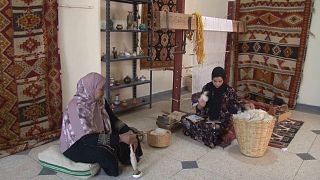Genetics
New research has uncovered a striking genetic connection between ancient Egypt and Mesopotamia, shedding light on the movement of people across early civilizations nearly 5,000 years ago.
Scientists sequenced the genome of a remarkably preserved skeleton found in a sealed burial pot at Egypt’s Nuwayrat tomb site. Dating between 4,495 and 4,880 years ago—around the time the Great Pyramid of Giza was built—the individual’s DNA revealed that about 80% of his ancestry was North African, while 20% traced to the Fertile Crescent, the birthplace of Mesopotamian civilization.
Pontus Skoglund of the Crick Institute, a co-author of the study published in Nature, explained, “It allows us to take a big step into the ancient DNA record of Egypt.” He noted that while the closest genetic match is from modern-day Morocco, links to Mesopotamia suggest migration may have accompanied cultural shifts like the advent of farming.
This discovery supports long-suspected ties between Egypt and Mesopotamia, once inferred only from trade goods and shared pottery styles. The Nile, researchers say, likely acted as an “ancient superhighway” for both people and ideas.
The study not only uncovers ancestry but offers a glimpse into a physically demanding life. The man, possibly a potter in his 60s, was buried in a high-status rock-cut tomb. Scientists hope further ancient DNA analysis will clarify how widespread these cultural and genetic exchanges were across early civilizations.













Go to video
Global Heat Report: Climate change fuels silent killer
01:50
Egypt wants ancient Christian ruins off UNESCO's list of sites in danger
01:43
Snake Man: His Immunity Might Cure Bites
Go to video
Dicovery: scientists believe mystery fossil is Denisovan, early human ancestor
Go to video
Digital exhibition brings story of ancient Egypt's King Tut to life
01:10
Winter solstice's first rays of sun align with ancient Luxor temple